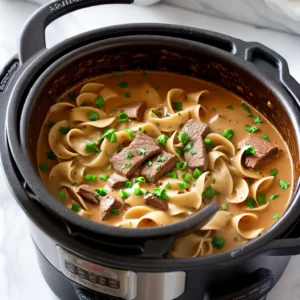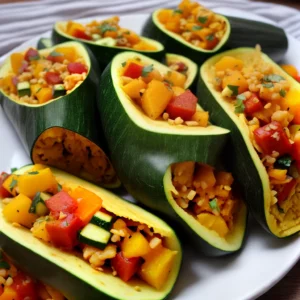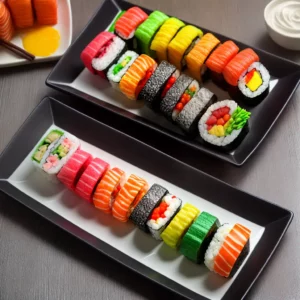Hello, fellow potato enthusiasts! Today, I’m here to share some valuable cooking tips to help you determine if your potatoes are done to perfection. There’s nothing worse than biting into an undercooked or overcooked potato, so let’s dive into the techniques that will ensure your spuds are cooked just right.
Whether you’re baking, boiling, roasting, or frying, these methods apply to all types of potato dishes. By relying on your senses and following these simple techniques, you’ll be able to cook your potatoes to perfection every time.
Key Takeaways:
- Use the poke test to check the doneness of your potatoes.
- Pay attention to visual cues like color and texture.
- Perform taste testing to ensure the potatoes have the right texture and flavor.
- Consider factors like size, variety, and cooking method for optimal doneness.
- Practice and experimentation will improve your ability to tell if potatoes are done.
Using the Poke Test
The poke test is a simple and effective technique to determine if potatoes are done cooking. To perform the poke test, you’ll need a fork or skewer. Insert the utensil gently into the potato. If it slides in smoothly without much resistance, that’s a good indication that the potato is cooked and ready to be enjoyed. On the other hand, if you feel resistance or the potato feels firm, it needs more cooking time.
The poke test works well for various cooking methods, including baking, roasting, and boiling. It allows you to gauge the doneness of the potato by assessing its texture. Remember, the texture can vary depending on personal preference, so adjust the cooking time accordingly to achieve your desired results.
The poke test is a reliable and straightforward way to determine if potatoes are cooked to perfection. By mastering this technique, you’ll be well-equipped to create delicious potato dishes with confidence.
| Advantages of the Poke Test | Disadvantages of the Poke Test |
|---|---|
| Simple and easy to perform | Requires precision to assess texture accurately |
| Provides a quick indication of doneness | May cause the potato to lose moisture if over-poked |
| Works well for various cooking methods | Subjective interpretation of desired texture |
Visual Cues
When it comes to determining if potatoes are done, visual cues can be incredibly helpful. By paying attention to the appearance of the potatoes, you can get a good sense of their doneness. For baked or roasted potatoes, look for a golden-brown color on the outside. This indicates that the potatoes have developed a crispy and flavorful exterior. When boiling potatoes, keep an eye out for the skin starting to crack or split. This is a clear sign that the potatoes are cooked and ready to be enjoyed.
Another visual cue to consider is the texture of the potatoes. Cooked potatoes should be fork-tender, meaning that a fork can easily be inserted into the potato without much resistance. If the potato feels firm or has a hard texture, it is likely not fully cooked and requires more time on the heat.
Visual cues not only help you determine if potatoes are done, but they also add to the overall presentation of your dish. A beautifully golden-brown baked potato or a perfectly boiled potato with a cracked skin can make your meal look even more appetizing.
Table: Visual Cues for Different Potato Dishes
| Potato Dish | Visual Cue |
|---|---|
| Baked Potatoes | Golden-brown color on the outside |
| Roasted Potatoes | Golden-brown and crispy exterior |
| Boiled Potatoes | Cracked or split skin |
| Mashed Potatoes | Smooth and creamy texture |
| Fried Potatoes | Crispy and browned appearance |
Visual cues can be a valuable tool in your cooking arsenal when it comes to determining if potatoes are done. By using your senses and paying attention to the appearance and texture of the potatoes, you can confidently ensure that your dishes are cooked to perfection.
Taste Testing
One of the most reliable methods for determining if potatoes are done is through taste testing. As a seasoned chef, I always emphasize the importance of using your senses when cooking, and taste testing is no exception. To ensure that your potatoes have reached the desired level of doneness and perfect texture, take a small piece and taste it. The ideal cooked potato should be tender and creamy, with no hint of rawness or crunchiness.
Taste testing not only helps you determine if the potatoes are done, but it also allows you to adjust the seasoning if needed. This is particularly important for dishes like mashed potatoes or gratin, where the perfect balance of flavors is essential. By taking a moment to taste your potatoes, you can ensure that they are not only cooked to perfection but also seasoned to your liking.
Remember, taste testing is subjective, and everyone’s preference differs. Some may prefer their potatoes slightly firmer, while others may enjoy them softer. It’s all a matter of personal preference. So take that small bite, savor the flavor, and trust your taste buds to guide you in determining the doneness of your potatoes.
Table: Cooking Techniques and Their Indicators of Doneness
| Cooking Technique | Indicator of Doneness |
|---|---|
| Baking | A fork easily pierces the center of the potato |
| Boiling | The potato is tender when pierced with a fork |
| Roasting | The potato chunks are golden-brown and crispy |
| Frying | The fries are golden and crispy on the outside, tender on the inside |
Factors Affecting Doneness
When it comes to determining the doneness of potatoes, several factors come into play. Understanding these factors is essential to ensure that your potatoes are cooked to perfection. Let’s take a closer look at the key elements that can affect the doneness of potatoes.
Potato Variety
One of the main factors that impact the doneness of potatoes is the variety itself. Different potato varieties have varying levels of starch content, which affects their cooking time and texture. For example, high-starch potatoes like Russets tend to be fluffier and require a longer cooking time to achieve the desired doneness. On the other hand, waxy potatoes like Yukon Golds have a lower starch content and cook faster, resulting in a creamier texture.
Cooking Method
The cooking method you choose can also influence the doneness of your potatoes. Baking, boiling, roasting, and frying all have different effects on the texture and cooking time. Baking at a moderate temperature allows the potatoes to cook evenly and develop a crispy skin. Boiling potatoes in water softens them quickly and is ideal for dishes like mashed potatoes. Roasting potatoes at higher temperatures enhances their natural flavors and creates a delicious caramelized exterior. Frying potatoes in oil results in a crispy and golden-brown exterior, making it perfect for dishes like french fries.
Potato Size and Shape
The size and shape of the potatoes can also impact their doneness. Larger potatoes will take longer to cook all the way through, while smaller ones will cook faster. It’s important to consider this when determining the cooking time and adjusting it accordingly. Additionally, the shape of the potatoes can also affect their cooking time. Cutting potatoes into smaller and uniform pieces ensures that they cook evenly and are done at the same time.
By taking these factors into account, you can ensure that your potatoes are cooked to perfection every time. Experimenting with different potato varieties and cooking methods will allow you to create a variety of delicious dishes that showcase the versatility of this humble vegetable.
Table: Cooking Methods and Doneness
| Cooking Method | Texture | Doneness Indicators |
|---|---|---|
| Baking | Crispy skin, fluffy interior | Golden-brown color, fork easily pierces the center |
| Boiling | Soft and tender | Potato easily pierced with a fork |
| Roasting | Crispy exterior, creamy interior | Golden-brown color, fork easily pierces the center |
| Frying | Crispy and golden-brown | Deep golden-brown color and crispy texture |
Baking Potatoes
When it comes to baking potatoes, it’s important to pay attention to the cooking techniques, temperature, and doneness. Baking allows the potatoes to develop a crispy skin while maintaining a tender and fluffy interior. To achieve the perfect baked potato, I recommend following these steps:
- Preheat the oven to 375 to 400 degrees F (190 to 200 degrees C). This temperature range ensures that the potatoes cook evenly and develop a delicious texture.
- Scrub the potatoes clean under running water and pat them dry. Leaving the skin on imparts extra flavor and adds a pleasing texture.
- Pierce each potato several times with a fork to allow steam to escape during baking. This prevents the potatoes from bursting and ensures even cooking.
- Place the potatoes directly on the oven rack or on a baking sheet lined with aluminum foil. The foil helps to retain the heat and prevent the potatoes from sticking.
- Bake the potatoes for approximately 45 minutes to 1 hour, or until the skin is crispy and the flesh is tender. You can test for doneness by gently squeezing the potatoes – they should yield to pressure.
- Once baked, remove the potatoes from the oven and let them rest for a few minutes before serving. This allows the residual heat to distribute evenly, making the potatoes even more tender.
Baking potatoes is a versatile cooking method that allows you to enjoy this starchy vegetable in a variety of ways. From loaded baked potatoes to potato skins, the options are endless. Experiment with different seasonings and toppings to create your own signature baked potato dish.
Table: Baking Potatoes Cooking Times
| Potato Size | Cooking Time |
|---|---|
| Small (4-6 oz) | 45 minutes to 1 hour |
| Medium (6-8 oz) | 1 hour to 1 hour 15 minutes |
| Large (8-10 oz) | 1 hour 15 minutes to 1 hour 30 minutes |
Boiling Potatoes
When it comes to cooking techniques, boiling potatoes is a classic method that yields tender and delicious results. Boiling is especially suitable for recipes like potato salad or mashed potatoes. To achieve the perfect texture and doneness, follow these simple steps:
- Clean and cut: Start by thoroughly cleaning your potatoes and removing any blemishes or dirt. Then, cut them into smaller, evenly sized pieces. This ensures that they cook evenly and at the same rate.
- Add salt: Next, fill a pot with enough water to fully submerge the potatoes. Add salt to the water for added flavor. The general rule of thumb is to use about 1 teaspoon of salt per quart of water.
- Boil until tender: Place the pot on the stove over medium-high heat and bring the water to a boil. Reduce the heat to maintain a gentle simmer and cook the potatoes until they are tender when pierced with a fork. The cooking time will depend on the size and variety of the potatoes.
- Drain and cool: Once the potatoes are done, drain them using a colander and let them cool slightly before using them in your recipe. This allows them to firm up slightly and makes them easier to handle.
Boiled potatoes can be used in a variety of dishes, from creamy mashed potatoes to hearty potato soups. Their soft and tender texture makes them versatile and a crowd-pleasing choice for many recipes. So, whether you’re making a family dinner or hosting a potluck, boiling potatoes is a reliable cooking technique that will give you perfectly cooked spuds every time.

Table: Cooking Time for Boiling Potatoes
| Potato Variety | Size of Potatoes | Cooking Time |
|---|---|---|
| Russet | Small | 15-20 minutes |
| Yukon Gold | Medium | 10-15 minutes |
| New Potatoes | Large | 20-25 minutes |
Table: The table above provides general guidelines for the cooking time of different potato varieties when boiling. Keep in mind that these are approximate times and may vary depending on the specific potato and desired level of doneness. It’s always a good idea to check the potatoes for tenderness using a fork to ensure they are cooked to your liking.
Other Cooking Methods
Aside from baking and boiling, there are other cooking methods you can explore to add variety to your potato dishes. Roasting and frying are two popular techniques that can bring out different flavors and textures in potatoes.
Roasting
Roasting is a great way to achieve a crispy exterior and a soft, fluffy interior in your potatoes. To roast potatoes, cut them into evenly sized chunks and toss them with olive oil or melted butter. Season with salt, pepper, and herbs of your choice. Spread the potatoes in a single layer on a baking sheet and roast in a preheated oven at around 400°F (200°C) for about 30-40 minutes or until golden brown and tender, turning them halfway through for even cooking. The high heat and longer cooking time give the potatoes a delicious caramelized flavor.
Frying
If you’re looking for a quicker cooking method that results in crispy potatoes, frying is the way to go. You can fry potatoes in oil or butter, depending on your preference. Start by cutting the potatoes into thin slices or small cubes. Heat oil or butter in a skillet over medium-high heat and carefully add the potatoes. Cook until they turn golden brown and crispy, stirring occasionally to ensure even cooking. Keep an eye on the potatoes while frying and adjust the heat as needed to prevent them from burning. Once done, remove the potatoes from the skillet and drain on paper towels to remove excess oil.
Remember, each cooking method may have different indicators of doneness. Whether you’re roasting or frying potatoes, keep an eye on their color, texture, and taste to determine if they’re cooked to your liking. With these alternative cooking methods, you can create a wide range of delicious dishes featuring perfectly cooked potatoes.
Storage and Reheating
Proper storage and reheating are essential for maintaining the doneness and flavor of your cooked potatoes. Whether you have leftovers or want to prepare potatoes in advance, following these guidelines will help you enjoy delicious potatoes whenever you desire.
Storing Cooked Potatoes: After cooking, allow the potatoes to cool completely before storing them. Place them in an airtight container or wrap them tightly in plastic wrap to prevent moisture loss. Refrigerate cooked potatoes for up to four days. For longer storage, you can freeze cooked potatoes for up to three months. Freezing may cause some texture changes, so it’s best to use frozen potatoes for mashed or fried dishes.
Reheating Potatoes: When reheating cooked potatoes, ensure they are heated all the way through to maintain their doneness. The microwave is a quick and convenient option for reheating small portions. Place the potatoes in a microwave-safe dish, cover with a damp paper towel, and heat at medium power in short intervals, stirring occasionally. Alternatively, you can reheat potatoes in the oven by placing them in a baking dish, covering with foil, and baking at a low temperature until heated through.
Tip: To preserve the texture and flavor of reheated potatoes, consider adding a bit of moisture or fat. You can sprinkle them with a few drops of water or drizzle with a small amount of melted butter or olive oil before reheating.
Table: Storage and Reheating Guide
| Storage Method | Reheating Method | Tips |
|---|---|---|
| Refrigeration | Microwave | – Cover with a damp paper towel – Heat in short intervals, stirring occasionally |
| Refrigeration | Oven | – Place in a baking dish, cover with foil – Bake at a low temperature until heated through |
| Freezing | Microwave | – Thaw in the refrigerator overnight before reheating – Follow microwave reheating instructions for refrigerated potatoes |
| Freezing | Oven | – Thaw in the refrigerator overnight – Follow oven reheating instructions for refrigerated potatoes |
Properly storing and reheating your cooked potatoes will help maintain their texture, flavor, and overall quality. Whether you’re meal prepping or saving leftovers, following these guidelines ensures that you can enjoy delicious potatoes with optimal doneness, even after they’ve been cooked.
Importance of Doneness
When it comes to cooking potatoes, determining the right level of doneness is not only essential for achieving the perfect texture and flavor but also for ensuring food safety. Undercooked potatoes can leave a starchy and unpleasant taste in your mouth, while overcooked potatoes can become mushy and lack the desired texture. By cooking potatoes to the appropriate level of doneness, you can elevate your dishes and avoid any potential foodborne illnesses.
Properly cooked potatoes provide a satisfying eating experience. They are tender, creamy, and full of flavor. Whether you’re baking, boiling, roasting, or frying potatoes, understanding doneness is crucial for achieving the desired results. It allows you to create dishes that are both visually appealing and enjoyable to eat.
Paying attention to the doneness of potatoes is not just about culinary preferences—it’s also about ensuring food safety. Potatoes, like any other food, can harbor harmful bacteria if not cooked thoroughly. By cooking them to the right level of doneness, you can eliminate any potential health risks and enjoy your meal with peace of mind.
Remember, different potato varieties, sizes, and cooking methods all play a role in determining the doneness. The poke test, visual cues, and taste testing are all valuable techniques that can help guide you in achieving the perfect doneness for your potatoes. With practice and experimentation, you’ll become more confident in your ability to tell if potatoes are done, ensuring delicious and safe meals for yourself and your loved ones.
| Benefits of Doneness | Importance for Food Safety |
|---|---|
| Potatoes with the right level of doneness have a tender and creamy texture. | Cooking potatoes thoroughly eliminates potential health risks from harmful bacteria. |
| Properly cooked potatoes are more flavorful and enjoyable to eat. | Undercooked potatoes can leave a starchy taste, while overcooked potatoes become mushy. |
| Doneness ensures that your potato dishes look visually appealing. | Cooking potatoes to the right doneness provides peace of mind when it comes to food safety. |
Cooking Tips and Techniques
When it comes to cooking with potatoes, there are endless possibilities to explore. By utilizing various cooking techniques and following a few expert tips, you can elevate your potato dishes to the next level. Whether you’re a beginner or a seasoned chef, these cooking tips will help you create flavorful and satisfying meals.
Experiment with Different Cooking Methods
One of the best ways to enhance your potato dishes is to experiment with different cooking methods. Baking, boiling, roasting, and frying each offer unique flavors and textures. Baked potatoes have a crispy skin and soft center, while boiled potatoes are tender and perfect for mashing. Roasted potatoes have a slightly caramelized exterior, and fried potatoes are crispy and indulgent.
Depending on the cooking method you choose, adjust the seasonings accordingly to complement the flavors. For example, sprinkle rosemary and garlic on roasted potatoes, or add paprika and black pepper to your fries. Don’t be afraid to get creative and try new flavor combinations to add excitement to your dishes.
Explore Different Potato Varieties
Another way to enhance your potato dishes is to explore different potato varieties. From russet and Yukon Gold to red and fingerling potatoes, each variety offers a unique taste and texture. Russet potatoes are great for baking and frying, while Yukon Gold potatoes have a creamy texture that’s ideal for mashing. Red potatoes hold their shape well when boiled or roasted, making them perfect for salads or side dishes. Fingerling potatoes are small and elongated, and their nutty flavor pairs well with various seasonings.
By using different potato varieties, you can create a diverse range of dishes with distinct flavors and textures. Experiment with different varieties to discover your favorites and tailor your recipes accordingly.
| Potato Variety | Best Cooking Method | Flavor and Texture |
|---|---|---|
| Russet | Baking, frying | Crispy exterior, fluffy interior |
| Yukon Gold | Mashing, roasting | Creamy texture, buttery flavor |
| Red | Boiling, roasting | Firm, holds shape well |
| Fingerling | Roasting, boiling | Nutty flavor, tender texture |
By exploring different potato varieties and their unique characteristics, you’ll have a wider range of options to create delicious and visually appealing potato dishes.
With these cooking tips and techniques, you can expand your culinary skills and create memorable potato dishes. Remember to experiment with different cooking methods, seasonings, and potato varieties to discover new flavors and textures. Whether you’re baking, boiling, roasting, or frying, potatoes offer endless possibilities for delicious meals that will impress your family and friends. So, get into the kitchen and start cooking up some potato magic!
Expert Chef Tips
As an expert chef, I have honed my skills in determining the doneness of potatoes through years of culinary experience. Here are some valuable tips I recommend for achieving perfectly cooked potatoes:
1. Utilize Cooking Techniques
Experiment with different cooking techniques to achieve the desired texture and flavor of your potatoes. Baking, boiling, roasting, and frying each have their own unique effects on the final result. It’s important to understand the nuances of each method and adjust cooking times accordingly. For example, baking at a higher temperature can create a crispy skin, while boiling can yield a soft and fluffy interior.
2. Trust Your Senses
Don’t underestimate the power of your senses when determining if potatoes are done. Use your sense of sight to look for visual cues such as a golden-brown crust or cracked skin. Pay attention to the aroma and listen for sizzling sounds when frying potatoes. These sensory indicators can give you valuable clues about the doneness of your potatoes.
3. Practice Makes Perfect
The key to becoming proficient in judging the doneness of potatoes is practice. Keep experimenting and learning from your experiences. The more you cook potatoes, the better you will become at recognizing the subtle signs of doneness. Trust your instincts and continue refining your techniques until you achieve the desired results consistently.
4. Adjust Cooking Times and Temperatures
Every potato is different, and factors such as size and variety can affect the cooking time. Keep in mind that cooking times provided in recipes are just guidelines and may need to be adjusted based on your specific circumstances. Use a meat thermometer to ensure your potatoes reach the appropriate internal temperature. This will help you avoid undercooked or overcooked potatoes.
Remember, determining the doneness of potatoes is both an art and a science. By following these expert chef tips and honing your cooking techniques, you’ll be able to achieve perfectly cooked potatoes every time.
Culinary Arts and Food Knowledge
As a chef, I believe that mastering the culinary arts and expanding your food knowledge is essential in creating exceptional potato dishes. The world of cooking is constantly evolving, and being aware of different cooking techniques and flavor pairings can elevate your culinary skills to the next level.
Understanding the principles of the culinary arts allows you to experiment with various methods of preparing potatoes. From boiling and baking to roasting and frying, each technique offers unique flavors and textures. By exploring these different cooking methods, you can discover new ways to showcase the natural flavors of potatoes and create delicious dishes that are sure to impress.
“The more you know, the more you can create. There’s no end to imagination in the kitchen.” – Julia Child
Having a deep understanding of food knowledge is also crucial when working with potatoes. Learning about different potato varieties and their characteristics can help you choose the right potato for a specific dish. Some potatoes are better suited for mashing, while others shine when roasted or used in salads. Knowing which potato to use can make a significant difference in the overall taste and texture of your dishes.
By continually expanding your culinary knowledge, experimenting with cooking techniques, and staying curious about the world of food, you can create potato dishes that are not only delicious but also showcase your expertise in the culinary arts.
Nutritional Benefits of Potatoes
Potatoes are not only delicious but also offer numerous nutritional benefits. They are a great source of complex carbohydrates, which provide energy and help fuel the body. Potatoes also contain dietary fiber, which aids in digestion and promotes a healthy digestive system. Additionally, potatoes are rich in essential vitamins and minerals, including vitamin C, potassium, and vitamin B6.
Vitamin C is an important antioxidant that supports immune function and helps protect the body against cell damage. Potatoes are a particularly good source of vitamin C, with one medium-sized potato providing about 45% of the recommended daily intake. Potassium is another essential nutrient found in potatoes, playing a vital role in maintaining proper heart and muscle function.
Moreover, potatoes are a good source of vitamin B6, which is involved in various bodily functions, including metabolism and brain development. The combination of these nutrients makes potatoes a nutritious and versatile addition to any diet. Whether baked, boiled, or roasted, potatoes can be enjoyed in a variety of dishes and provide valuable nutritional benefits.
In summary, potatoes offer a range of nutritional benefits and are a versatile ingredient that can be incorporated into various dishes. They are a great source of complex carbohydrates, dietary fiber, and essential vitamins and minerals. By cooking potatoes using different techniques, you can make the most of their nutritional value and enjoy their delicious flavor.
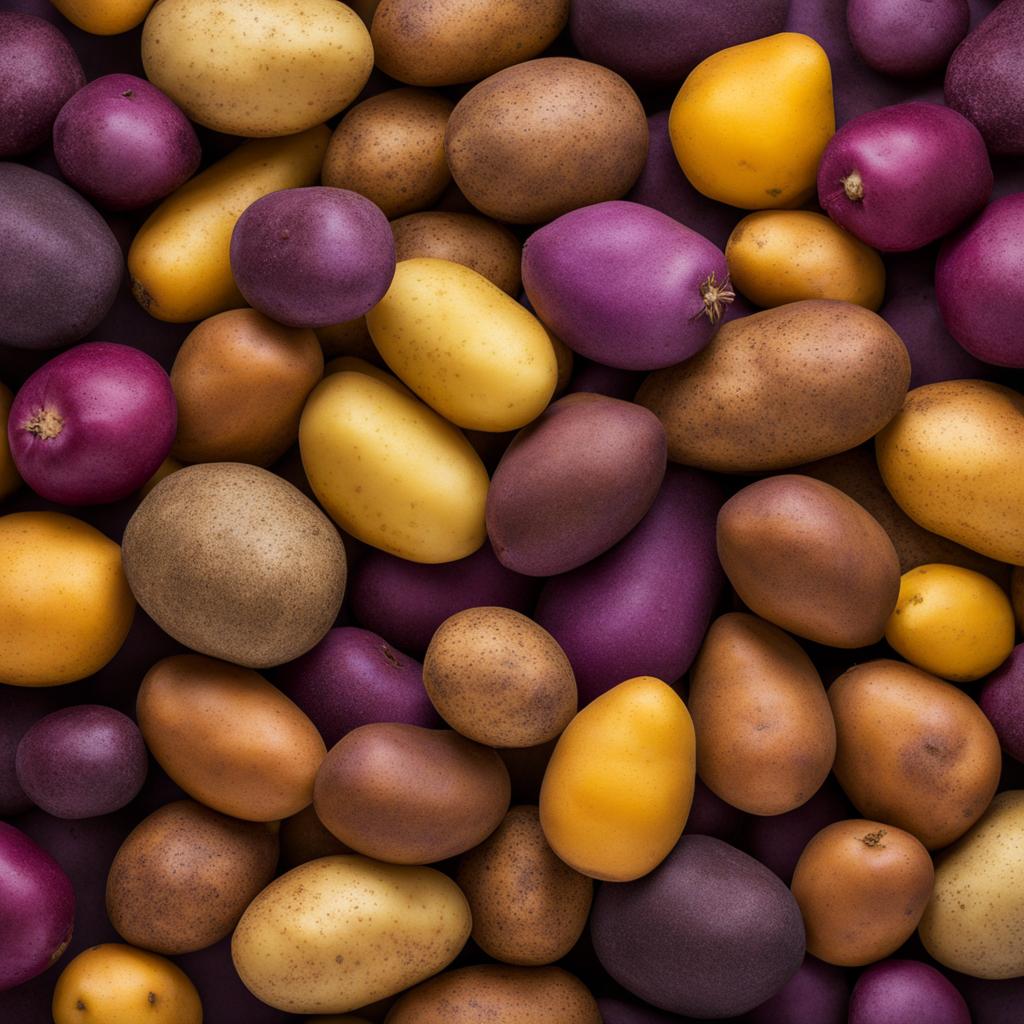
Nutritional Benefits of Potatoes
| Nutrient | Amount per 100g |
|---|---|
| Calories | 77 |
| Carbohydrates | 17.5g |
| Fiber | 2.2g |
| Protein | 2g |
| Fat | 0.1g |
| Vitamin C | 19.7mg |
| Potassium | 429mg |
| Vitamin B6 | 0.3mg |
Did you know? One medium-sized potato contains about 45% of the recommended daily intake of vitamin C.
Practice Makes Perfect
Mastering the art of determining the doneness of potatoes takes practice. As you gain experience, you’ll become more confident in your ability to tell if potatoes are done. Don’t be discouraged if your first attempts are not perfect – learning from your experiences is part of the journey. Keep experimenting with different cooking techniques and potato dishes to refine your skills and develop your culinary expertise.
By practicing, you’ll begin to understand the subtle cues that indicate the perfect level of doneness for potatoes. Whether it’s using the poke test, relying on visual cues, or taste testing, each method will become more intuitive with time. With practice, you’ll be able to achieve the desired texture and flavor in your potato dishes.
Remember that practice doesn’t mean only making mistakes; it also involves trying new recipes and techniques. Don’t hesitate to explore different cooking methods, experiment with herbs and spices, and discover the unique characteristics of various potato varieties. Through practice, you’ll expand your repertoire of potato dishes and continue to improve your cooking skills.
So, don’t be afraid to get your hands dirty and dive into the world of potato cooking. Practice, experiment, and have fun with the process – and you’ll soon become a master at determining the doneness of potatoes.
Conclusion
In conclusion, mastering the art of determining the doneness of potatoes is an essential skill for any home cook. By utilizing techniques such as the poke test, visual cues, and taste testing, you can confidently assess if your potatoes are cooked to perfection.
Remember to consider factors like size, variety, and cooking method when determining doneness. Each cooking technique may have different indicators, so it’s important to adjust accordingly. Whether you’re baking, boiling, roasting, or frying, paying attention to these details will ensure that your potato dishes turn out delicious.
Through practice and experimentation, you’ll become more skilled in gauging the doneness of potatoes. Don’t be discouraged if your first attempts are not perfect – with time, you’ll develop a keen intuition for when your potatoes are ready to be enjoyed.
FAQ
How do I know if my potatoes are done?
To determine if potatoes are done, rely on your senses and use various techniques such as the poke test, visual cues, and taste testing. By following these cooking tips, you can ensure that your potatoes are cooked to perfection.
What is the poke test for potatoes?
The poke test is a simple and effective way to check the doneness of potatoes. Use a fork or skewer to gently pierce the potato. If the utensil slides in smoothly without much resistance, the potato is done. If there’s still resistance or the potato feels hard, it needs more cooking time.
How can visual cues indicate if potatoes are done?
Visual cues can indicate whether potatoes are done. For baked or roasted potatoes, look for a golden-brown color on the outside. When boiling potatoes, the skin may start to crack or split, indicating that they are cooked.
Is taste testing important when cooking potatoes?
Yes, taste testing is an important method for checking if potatoes are done. Take a small piece of potato and taste it to ensure it has a tender and creamy texture. This not only helps determine doneness but also allows you to adjust the seasoning if needed.
What factors affect the doneness of potatoes?
Several factors can affect the doneness of potatoes, such as size, variety, and cooking method. Larger potatoes may require more cooking time, while smaller pieces cook faster. Starch content varies among potato varieties, so it’s important to consider this when determining doneness. Different cooking methods can also affect the texture of the potatoes.
How do I bake potatoes to perfection?
When baking potatoes, rely on your senses and use a meat thermometer for accuracy. The aroma and steam escaping from the oven can indicate if the potatoes are fully baked. The skin should have a crispy texture, and a fork should easily pierce the center of the potato with little resistance.
What is the best way to boil potatoes?
Boiling potatoes is a straightforward process. Clean the potatoes thoroughly and cut them into smaller, evenly sized pieces for more even cooking. Add salt to the water for flavor and boil until the potatoes are tender when pierced with a fork. The cooking time may vary depending on the size and variety of the potatoes.
Are there other cooking methods for potatoes?
Yes, there are other cooking methods like roasting and frying. Each cooking method may have different indicators of doneness, so adjust accordingly.
How should I store and reheat cooked potatoes?
After cooking potatoes, store them properly to maintain their quality. Refrigerate cooked potatoes for a few days or freeze them for a longer period. When reheating, ensure that the potatoes are heated all the way through using methods like the microwave or oven.
Why is it important to check the doneness of potatoes?
Checking the doneness of potatoes is crucial for both flavor and food safety. Undercooked potatoes can have an unpleasant texture and taste, while overcooked potatoes may become mushy or lack flavor. Ensuring that potatoes are cooked to the right level of doneness also helps prevent any potential foodborne illnesses.
Can you provide any cooking tips and techniques for potatoes?
To enhance your cooking skills with potatoes, experiment with different cooking techniques and recipes. Try adding herbs, spices, or other flavorings to elevate the taste. Consider using different potato varieties for specific dishes.
What tips do expert chefs have for cooking potatoes?
As an expert chef, I recommend relying on your senses and practicing the various techniques mentioned earlier to determine the doneness of potatoes. Explore different cooking methods and temperatures to achieve the desired texture and flavor.
How can culinary arts and food knowledge improve my cooking skills with potatoes?
Understanding the principles of culinary arts and expanding your food knowledge can greatly enhance your cooking skills with potatoes. Learn about different potato varieties, cooking methods, and flavor pairings. Experiment with traditional and innovative recipes to further develop your culinary expertise.
What are the nutritional benefits of potatoes?
Potatoes are nutritious and versatile root vegetables. They provide essential nutrients like vitamins, minerals, and fiber. By cooking potatoes to the appropriate level of doneness, you can maximize their nutritional value and enjoy their benefits as part of a balanced diet.
How can practice help me improve my potato cooking skills?
Like any skill, mastering the art of determining the doneness of potatoes takes practice. Keep experimenting, learning from your experiences, and refining your techniques. With time and practice, you’ll become more confident in your ability to tell if potatoes are done.
Source Links
- https://www.southernliving.com/how-to/cook/how-to-boil-potatoes
- https://homecookbasics.com/how-to-tell-if-potatoes-are-done/
- https://idahopotato.com/dr-potato/dr-potato-how-can-i-tell-when-my-baked-potatoes-are-done
Related Recipes:
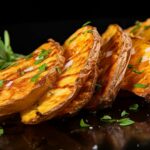 How to Cook Air Fryer Potatoes? (Perfect Step-By-Step Guide)
How to Cook Air Fryer Potatoes? (Perfect Step-By-Step Guide)
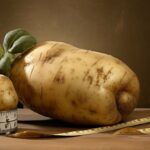 How Many Potatoes in a Pound? (Perfect Measurement Conversion Guide)
How Many Potatoes in a Pound? (Perfect Measurement Conversion Guide)
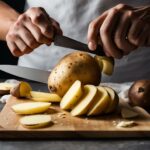 How to Peel Potatoes: Quick Tips for Different Types
How to Peel Potatoes: Quick Tips for Different Types
 How to Freeze Sweet Potatoes: A Guide
How to Freeze Sweet Potatoes: A Guide
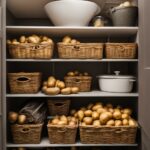 How to Store Potatoes and Keep Them Fresh
How to Store Potatoes and Keep Them Fresh
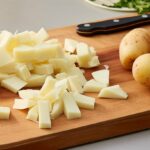 How to Cut Potatoes? (Perfect Step-By-Step Guide)
How to Cut Potatoes? (Perfect Step-By-Step Guide)
 How to Keep Mashed Potatoes Warm for Dinner Parties
How to Keep Mashed Potatoes Warm for Dinner Parties
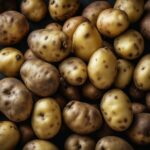 How to Tell if Potatoes Are Bad: Freshness Guide
How to Tell if Potatoes Are Bad: Freshness Guide



